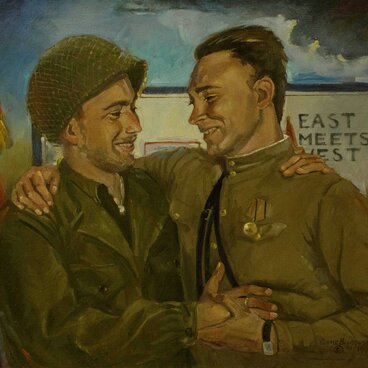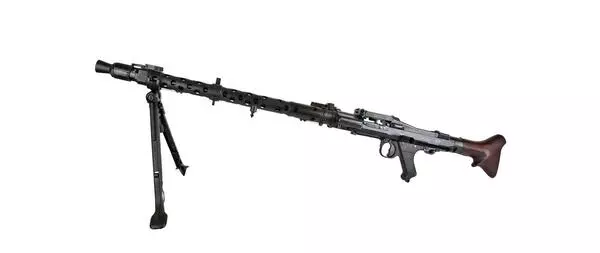The exhibition of the Victory Museum includes a Solothurn anti-tank rifle. It was developed by the weapons designer Louis Stange. The Treaty of Versailles imposed strict restrictions on Germany which limited the production of new weapons including anti-tank rifles. Since the Germans could not manufacture firearms, they used Swiss companies. In 1932, the Solothurn brand released a new semi-automatic anti-tank cannon that used 20×105 mm ammunition.
The Solothurn was used as a heavy anti-tank rifle. In the mid-1930s, its design underwent significant modifications. The new rifle could use more powerful ammunition for providing infantry support. From 1936, the Solothurn started gaining popularity and was adopted into service in Hungary, Bulgaria, Romania, and Italy.
There were three rifle modifications for various cartridges. The rifle’s design was improved continuously, and the Solothurn became a universal weapon: it could be installed on a tripod or a wheel carriage or used as a light machine gun.
Soon, a general-purpose modification was invented which combined all the previous versions. The new Solothurn was aimed at destroying not only tanks but also aircraft. It provided both single shots and continuous fire. The new rifle was mounted on a stationary stand. The Solothurn was also characterized by having a muzzle brake. The modifications turned the Solothurn into one of the most efficient weapons.
The largest batches of the Solothurn rifles were ordered for the Italian infantry troops. Each battalion received two or three anti-tank rifles. After Italy surrendered in September 1943, all rifles were transferred to the German forces.
In 1944, the Solothurn rifles were converted into anti-aircraft guns. They were decommissioned completely in the late 1950s. By that time, there were only four working units. This Solothurn rifle was the most mass-produced model of the Swiss company although there is no precise information about the number of rifles manufactured.
The Solothurn was used as a heavy anti-tank rifle. In the mid-1930s, its design underwent significant modifications. The new rifle could use more powerful ammunition for providing infantry support. From 1936, the Solothurn started gaining popularity and was adopted into service in Hungary, Bulgaria, Romania, and Italy.
There were three rifle modifications for various cartridges. The rifle’s design was improved continuously, and the Solothurn became a universal weapon: it could be installed on a tripod or a wheel carriage or used as a light machine gun.
Soon, a general-purpose modification was invented which combined all the previous versions. The new Solothurn was aimed at destroying not only tanks but also aircraft. It provided both single shots and continuous fire. The new rifle was mounted on a stationary stand. The Solothurn was also characterized by having a muzzle brake. The modifications turned the Solothurn into one of the most efficient weapons.
The largest batches of the Solothurn rifles were ordered for the Italian infantry troops. Each battalion received two or three anti-tank rifles. After Italy surrendered in September 1943, all rifles were transferred to the German forces.
In 1944, the Solothurn rifles were converted into anti-aircraft guns. They were decommissioned completely in the late 1950s. By that time, there were only four working units. This Solothurn rifle was the most mass-produced model of the Swiss company although there is no precise information about the number of rifles manufactured.



